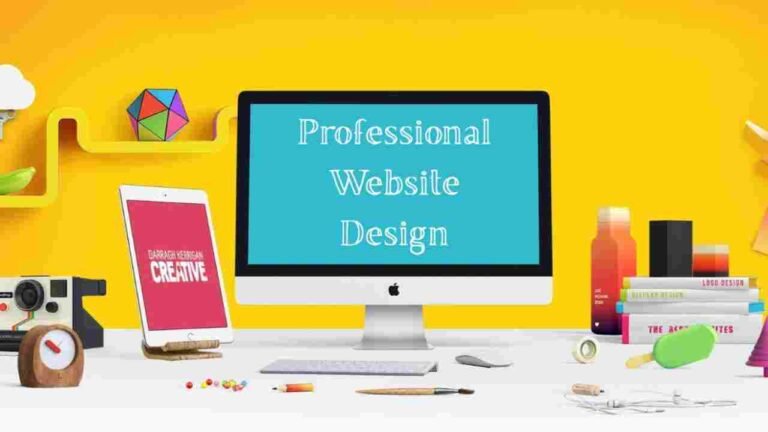In today’s digital age, having a website is essential for individuals, businesses, and organizations looking to establish an online presence. Whether you want to create a blog, showcase your portfolio, start an online business, or just learn the basics of web development, building your first website can be a rewarding and empowering experience.
This beginner’s guide will walk you through the process of creating your very first website from scratch, without needing advanced technical knowledge. You will learn about choosing the right platform, designing your website, publishing it online, and maintaining it. Let’s dive in!
1. Why Build a Website?
Before we start with the “how,” it’s important to understand why having a website is beneficial:
- Establish Your Brand: A website serves as a digital identity and allows you to express your brand to the world.
- Share Information: Whether it’s a personal blog or a business page, a website allows you to share content, services, and products with a global audience.
- Enhance Credibility: A professional website helps you establish credibility and trust with potential customers, employers, or followers.
- Generate Income: A website opens up avenues to make money through advertising, selling products, or offering services.
Now that you know why building a website is essential, let’s move on to the steps involved.
2. Step 1: Define the Purpose of Your Website
Before you begin, it’s important to define the purpose of your website. This will help you determine the type of site you need to build, the design, and the features you will require.
Here are a few common types of websites you can create:
- Personal Websites or Blogs: If you want to share your thoughts, experiences, or stories with the world.
- Business Websites: For small businesses, agencies, or companies that want to showcase products and services.
- Portfolio Websites: For creatives like photographers, artists, or designers to display their work.
- E-commerce Websites: If you want to sell products or services online.
- Educational Websites: If you’re teaching a course or providing educational content.
Knowing your website’s purpose will guide every decision, from selecting a platform to choosing the design and functionality.
3. Step 2: Choose a Website Building Platform
For beginners, website builders are the easiest and most cost-effective way to build a website. They offer drag-and-drop functionality, meaning you don’t need coding knowledge to create a professional-looking website. Some of the most popular website builders include:
3.1. WordPress
- Best for: Blogs, business websites, e-commerce stores, portfolios
- Why Choose It: WordPress is the most widely used platform in the world, offering a vast collection of themes and plugins. It’s customizable, SEO-friendly, and free to use.
- Pros: Easy to set up, large support community, thousands of themes and plugins
- Cons: Requires hosting, more maintenance than some other website builders
3.2. Wix
- Best for: Personal websites, portfolios, small businesses
- Why Choose It: Wix is a popular drag-and-drop website builder known for its user-friendly interface and design flexibility.
- Pros: No coding required, easy to use, variety of templates
- Cons: Limited control over SEO, not as scalable as WordPress for large websites
3.3. Squarespace
- Best for: Creatives, photographers, bloggers
- Why Choose It: Squarespace is known for beautiful design templates, making it perfect for portfolio and creative websites.
- Pros: Stunning templates, great for creatives, all-in-one platform
- Cons: Slightly more expensive, fewer plugins than WordPress
3.4. Shopify
- Best for: E-commerce websites
- Why Choose It: Shopify is designed specifically for building online stores and comes with all the necessary tools for managing inventory, processing payments, and marketing products.
- Pros: Easy-to-use e-commerce platform, great support
- Cons: Monthly fees, limited design customization compared to WordPress
4. Step 3: Choose and Register a Domain Name
Your domain name is the web address (URL) that people will use to find your website. A domain name is essential for establishing your online identity. Here are some tips for choosing a good domain name:
- Keep It Short and Simple: Choose something easy to remember and type.
- Include Keywords: If possible, include keywords relevant to your website’s niche.
- Avoid Numbers and Hyphens: Numbers and hyphens can be confusing and hard to remember.
- Choose the Right Extension: The most common domain extension is .com, but you can also consider .net, .org, or other specialized extensions like .store for e-commerce sites.
You can register your domain name through a domain registrar like GoDaddy, Namecheap, or directly through website builders like Wix or WordPress.
5. Step 4: Select a Web Hosting Provider
Web hosting is where all your website’s files are stored. A good hosting provider ensures your website runs smoothly and loads quickly. If you’re using a website builder like Wix or Squarespace, hosting is included in the plan. However, if you’re using WordPress, you’ll need to select a hosting provider.
Popular Hosting Providers:
- Bluehost: Best for beginners and recommended by WordPress.
- SiteGround: Known for excellent customer support and high performance.
- HostGator: Affordable plans for small businesses and personal websites.
When choosing a hosting provider, consider factors such as cost, reliability, customer support, and scalability.
6. Step 5: Design Your Website
Once you’ve chosen a platform and set up hosting, it’s time to design your website. Many website builders offer pre-designed templates, allowing you to select a design that aligns with your website’s purpose.
6.1. Choose a Template
- For Personal Websites/Blogs: Select a clean and simple template that emphasizes readability.
- For E-commerce Websites: Choose a template that highlights your products with clear navigation and easy access to shopping cart and checkout options.
- For Portfolios: Pick a template that showcases your work in a visually appealing way.
6.2. Customize Your Website
- Color Scheme: Choose colors that match your brand or the mood you want to convey.
- Typography: Use easy-to-read fonts for both headings and body text.
- Images and Graphics: Use high-quality images to make your website visually appealing. Many website builders offer free image libraries.
7. Step 6: Add Essential Features and Content
Now that your website design is in place, it’s time to add content and features. Here’s what you should include:
7.1. Pages
- Home Page: This is the first impression visitors will have of your website. Make sure it’s clear, concise, and visually appealing.
- About Page: Let your visitors know who you are and what your website offers.
- Contact Page: Include your contact details and a contact form.
- Blog or Portfolio Page: If you’re a blogger or creative, ensure you have a blog or portfolio page for content.
7.2. Essential Features
- Navigation Bar: Make sure users can easily navigate your website.
- Search Functionality: A search bar allows visitors to find content quickly.
- Social Media Links: Add social media icons to connect with your audience.
8. Step 7: Publish and Promote Your Website
Once your website is ready, it’s time to publish it. Most website builders have a publish button that makes this process easy. After publishing, promote your website through various channels:
- SEO (Search Engine Optimization): Optimize your website’s content with relevant keywords to rank higher in search engine results.
- Social Media: Share your website on social platforms like Facebook, Instagram, and Twitter to drive traffic.
- Email Marketing: Collect email subscribers and send newsletters to keep your audience engaged.
9. Step 8: Maintain and Update Your Website
Building a website is just the beginning; it’s essential to regularly maintain and update it. Here are some things you should do:
- Update Content: Add new content, blog posts, or products regularly.
- Check for Broken Links: Ensure all links on your website are working.
- Monitor Performance: Use tools like Google Analytics to track your website’s performance and optimize it for better results.
Conclusion
Building your first website is an exciting and empowering experience. By following this step-by-step guide, you can create a website that meets your needs and goals without any prior coding experience. Whether you’re building a personal blog, business site, or portfolio, remember that consistency and continuous learning are key to maintaining a successful website. So, go ahead, take the leap, and start building your online presence today!

